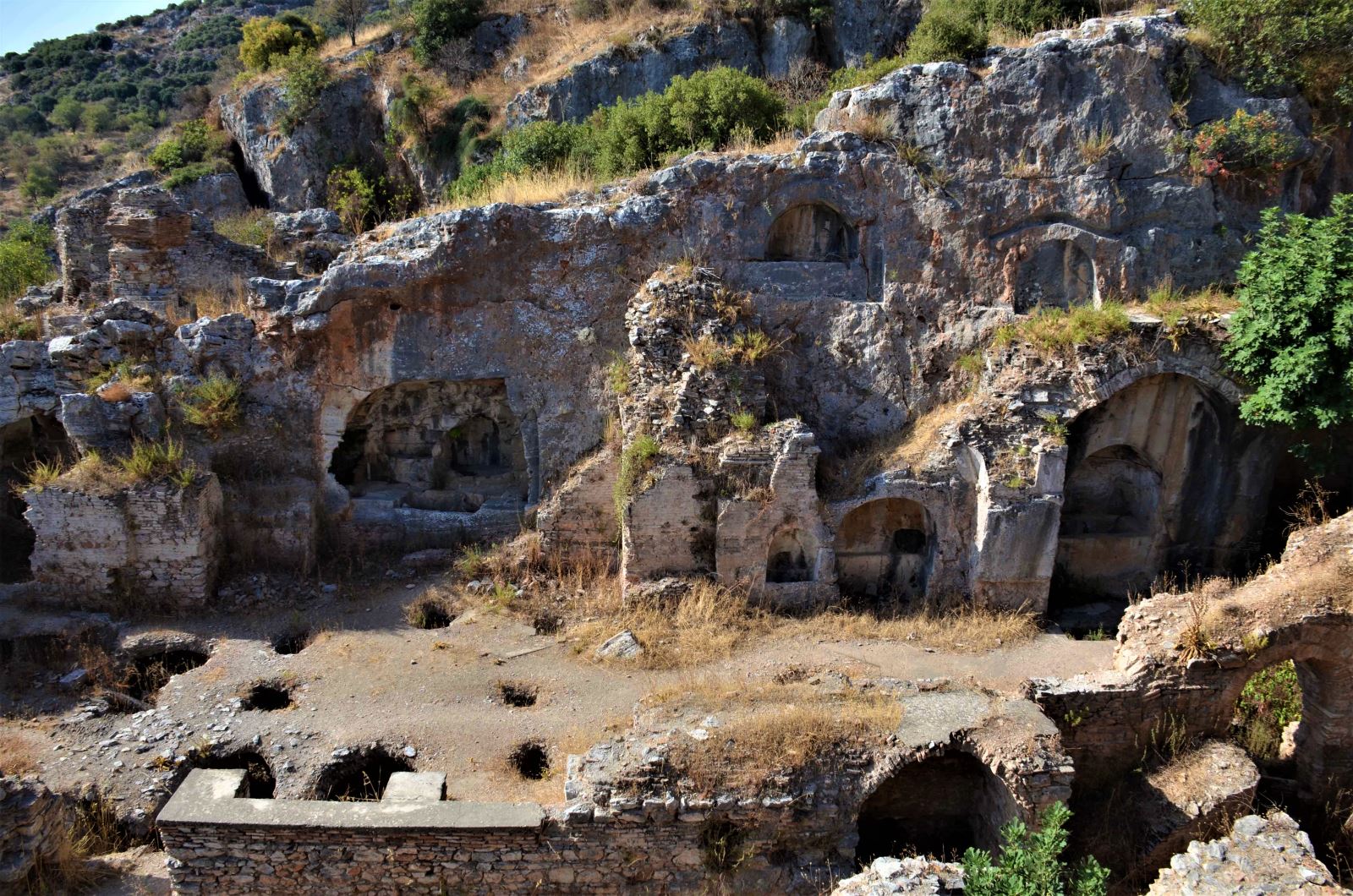The Cave of the Seven Sleepers, located at the foot of Mount Panayır, near the ancient city of Ephesus, can be reached by going to the asphalt road turning eastward next to the Vedius Gymnasium. This place is known as the cave where the seven young people sleep in the story of the Seven Sleepers - or Seven Sleepers - mentioned in both Islam and Christianity.
While the Cave of Ahsab-ı Kehf, mentioned in the Quran in the Surah al-Kahf by Muslims, is accepted to be the cave located mostly in Tarsus or Afşin today, the Christian world has adopted this place in Ephesus.
Legend of the Seven Sleepers
According to the legend, which is told in different details in different sources, seven Christian young people lived around 250 AD during the reign of Emperor Decius (These are Malta, Malchus, Martinianus, Dionysius, Yohannes, Serapion and Konstantinus, whose names are given differently in many sources. In Islam, Debernuş, Mesliha, Kafeştateyyuş, Sazınuş, Mekselina, Mermuş, Yemliha and their dog Kıtmir are mentioned) refuse to offer sacrifices to the temple where the emperor is deified and take shelter in a cave when they receive death threats. The ruler orders a wall to be built at the entrance of the cave. The Seven Sleepers fall asleep after a while. The young people wake up and, unaware of everything, go to the city to buy food. When Yemliha, who wanted to buy bread from a bakery, gave the old money, it was no longer Decius' (249-251) but II. He learns that they were in the time of Theodosius (408-450) and that they slept with their friends not just for one night, but for 200 years. Christianity has now become widespread throughout the Roman Empire. When Yemliha returns to the cave and explains the situation, all the friends decide to sleep again and never wake up again.
It is said that after the deaths of the seven young people, a big funeral was held and a church was built over the cave where they were buried.
During the excavations carried out here in the past years, a church and many graves were found. When inscriptions addressed to the Seven Sleepers, who were considered sacred, were seen in the tombs and on the walls of the church, it was accepted that this was a legendary church. There is one of the important cemetery areas of the Ancient City of Ephesus in its immediate vicinity.


